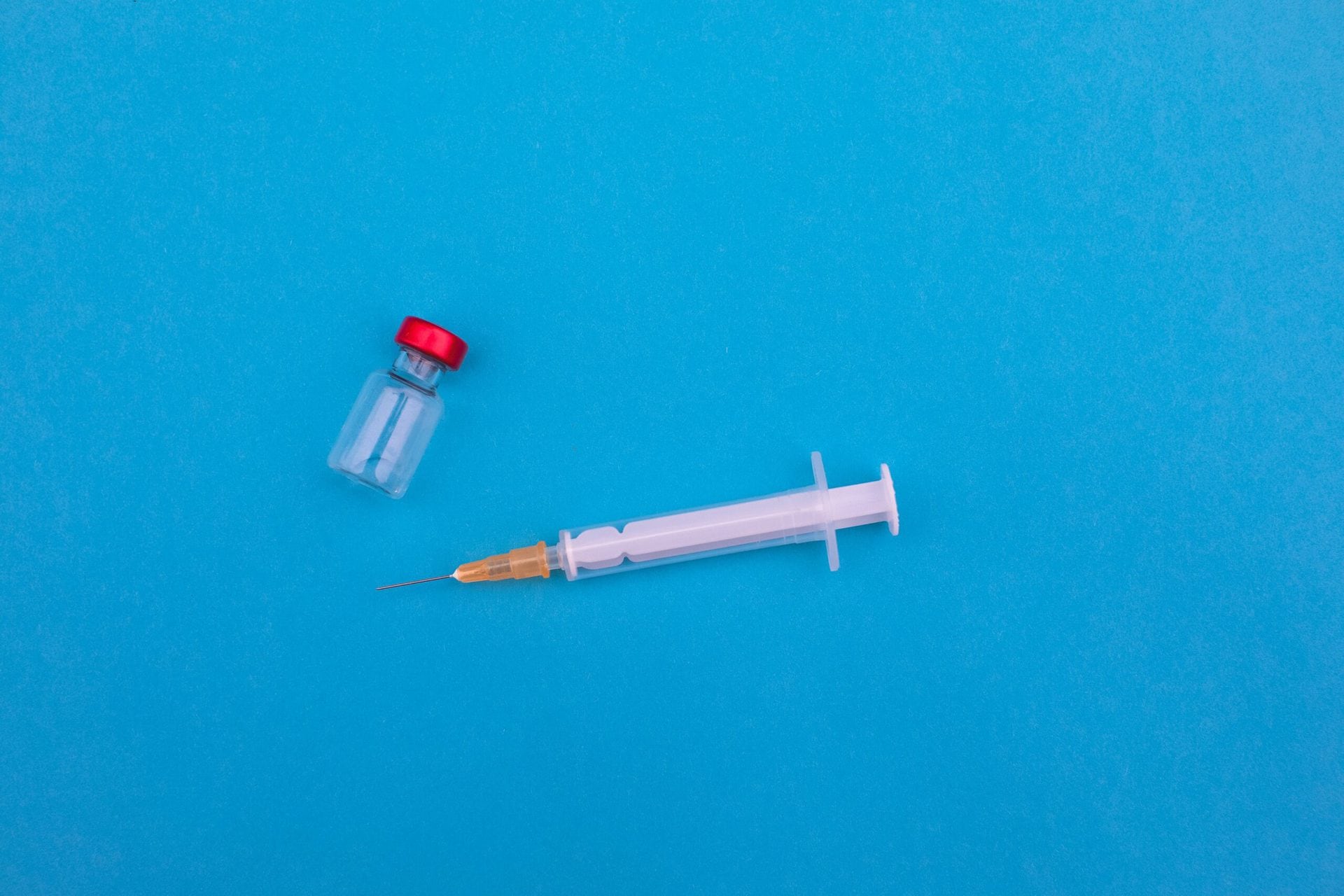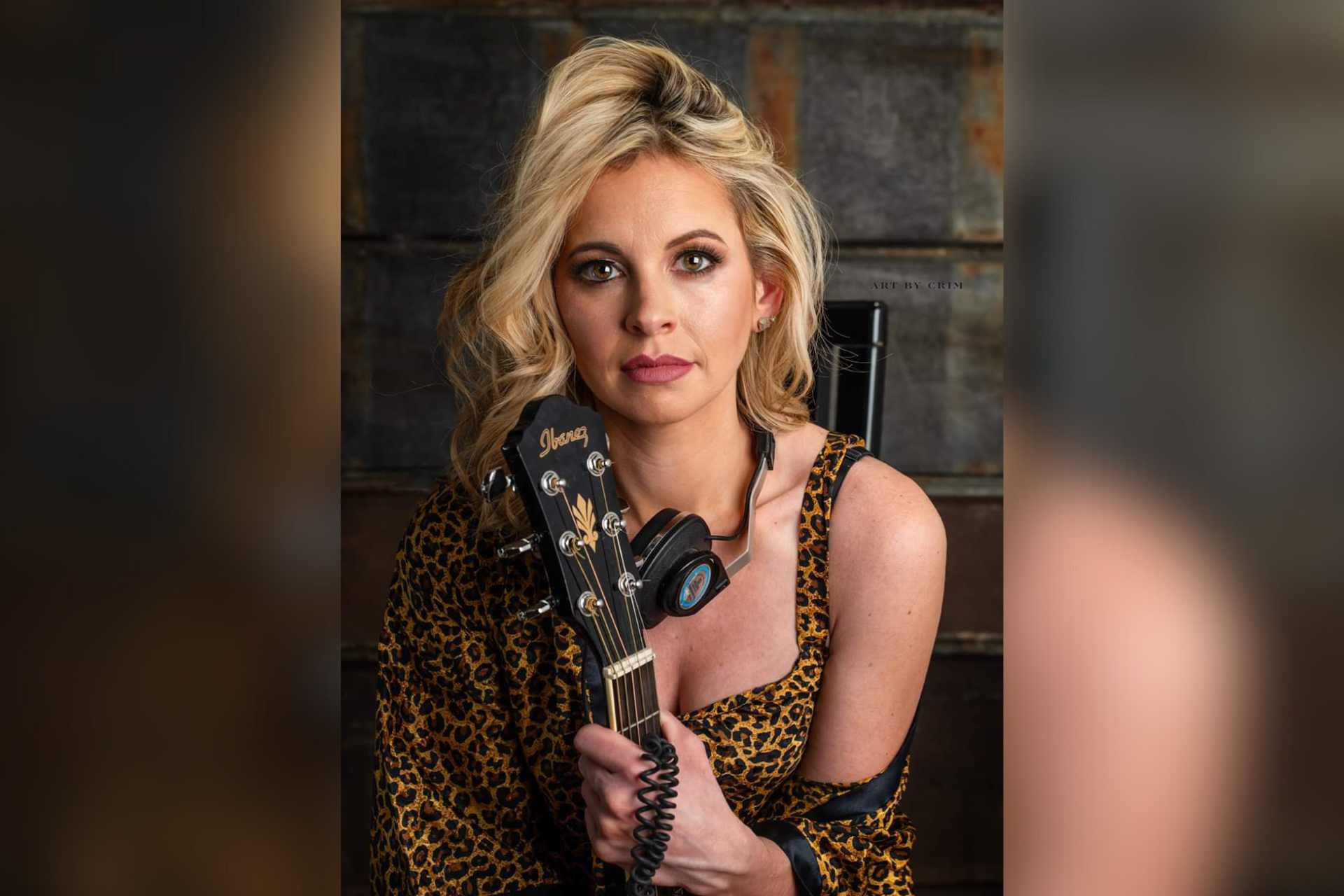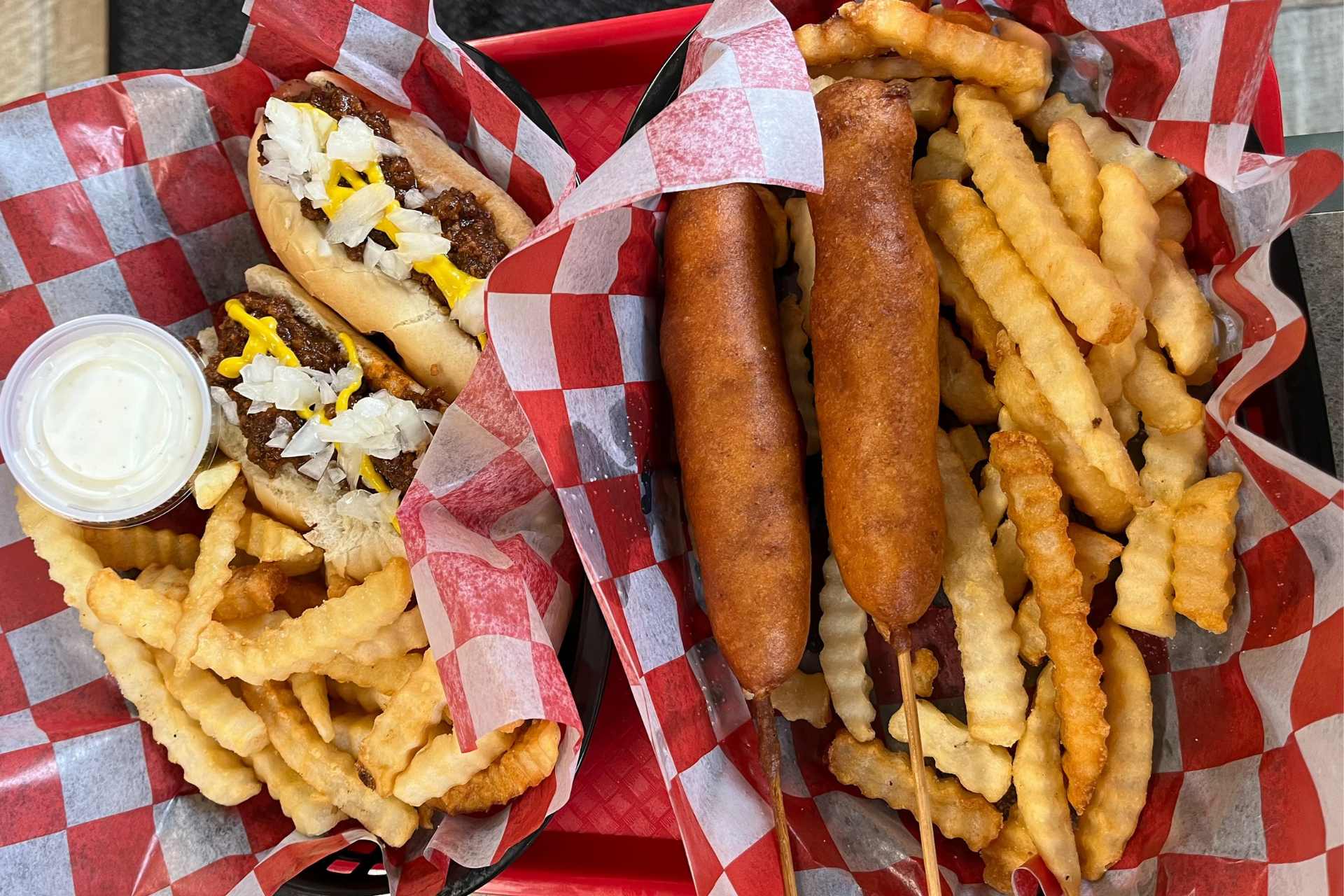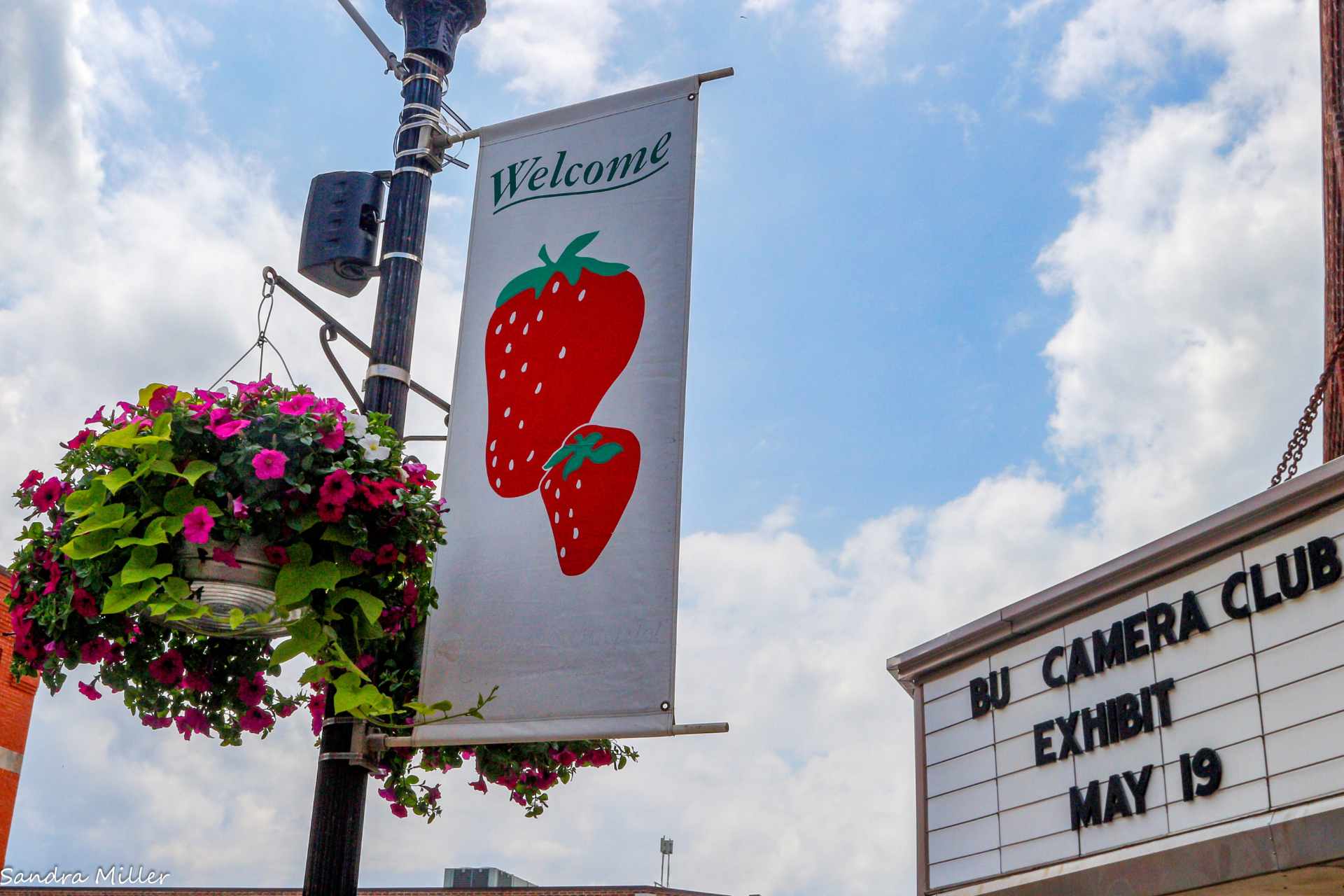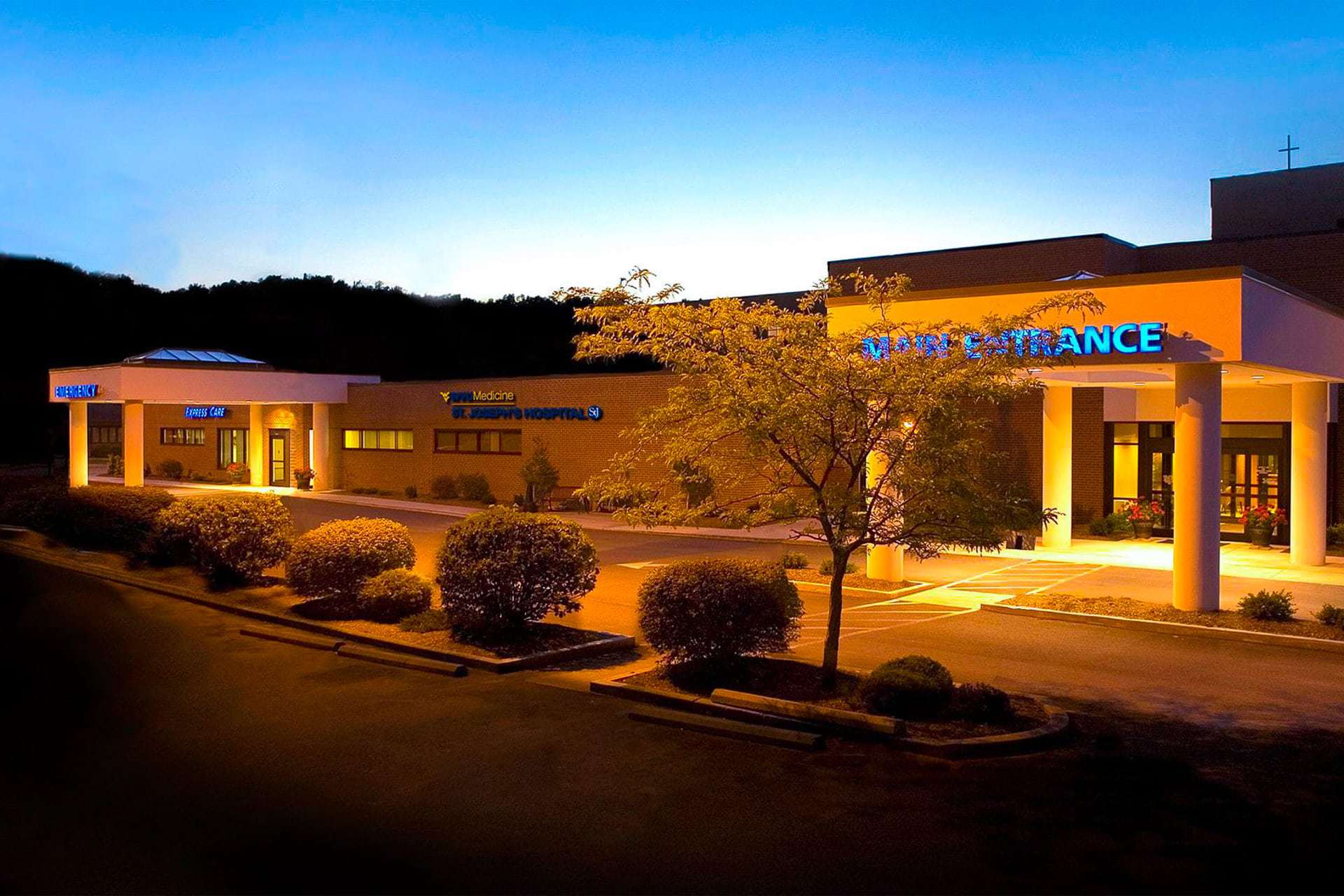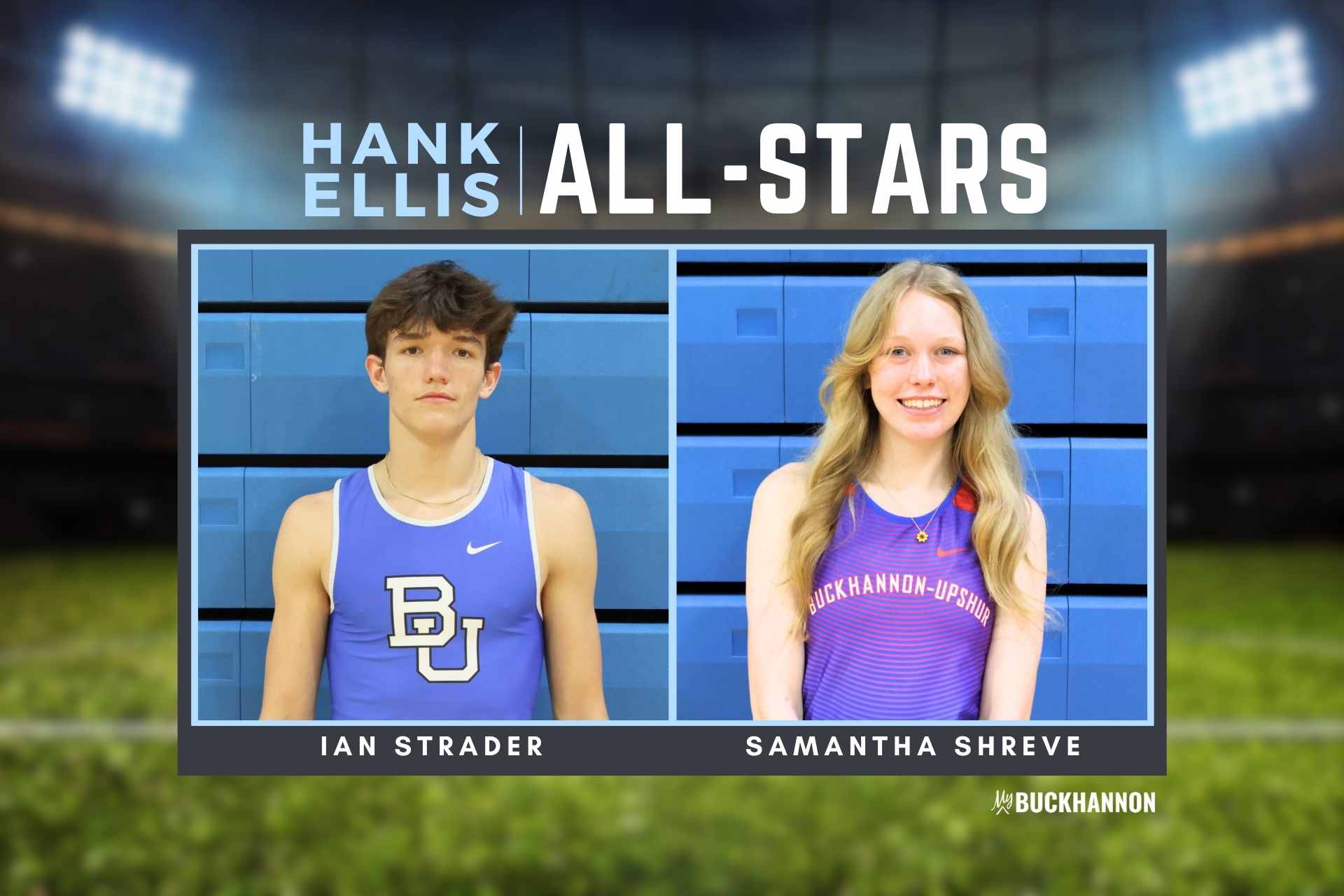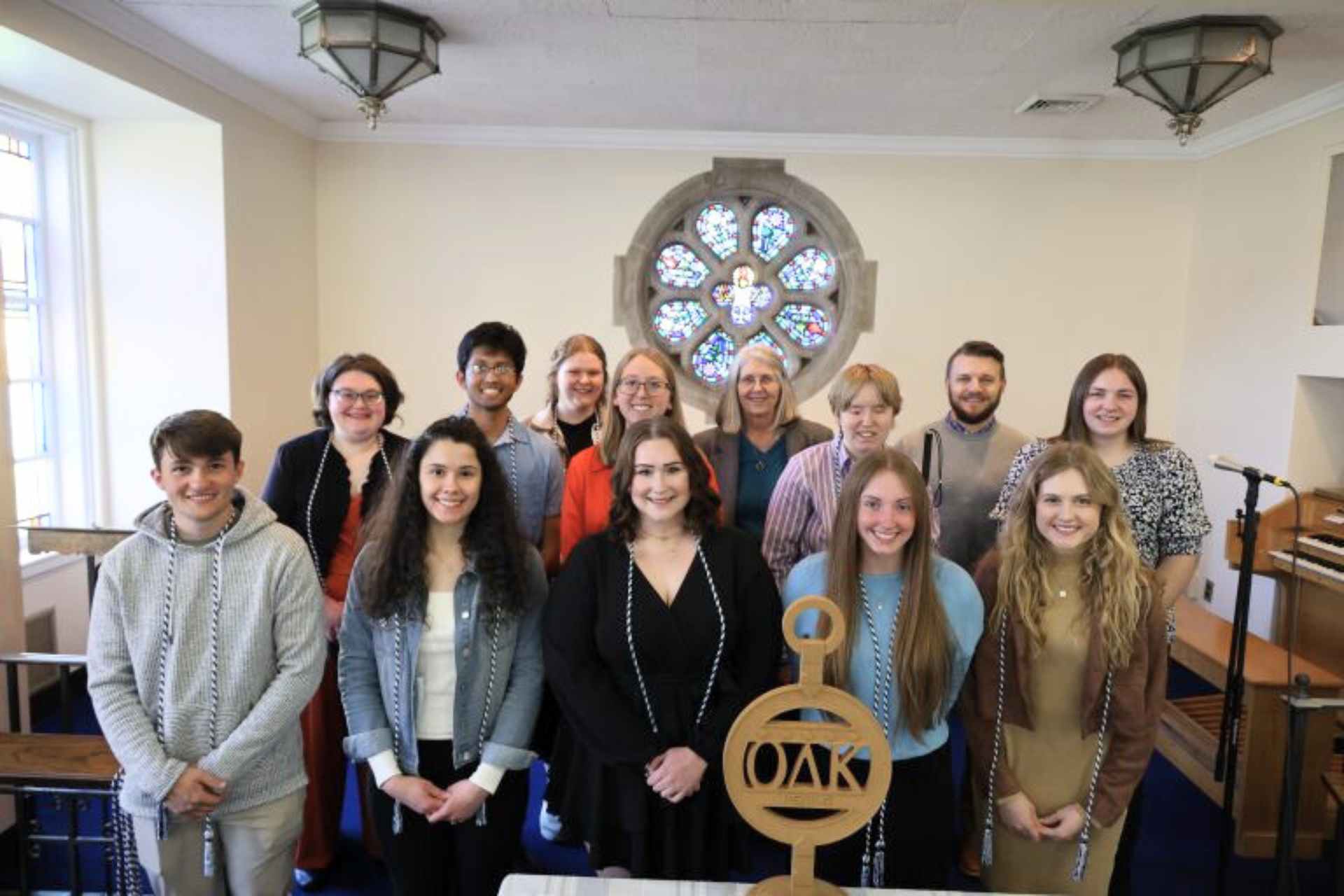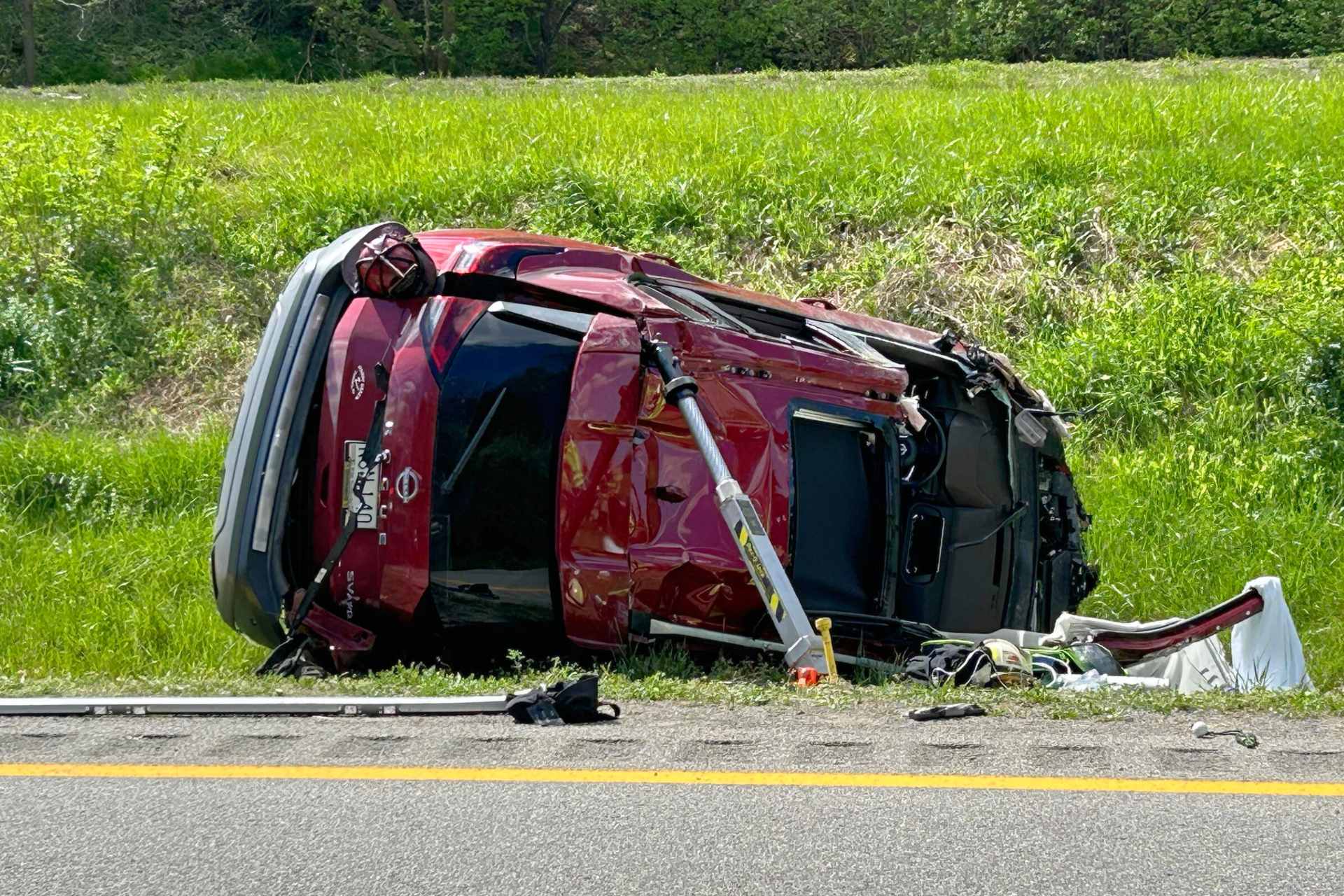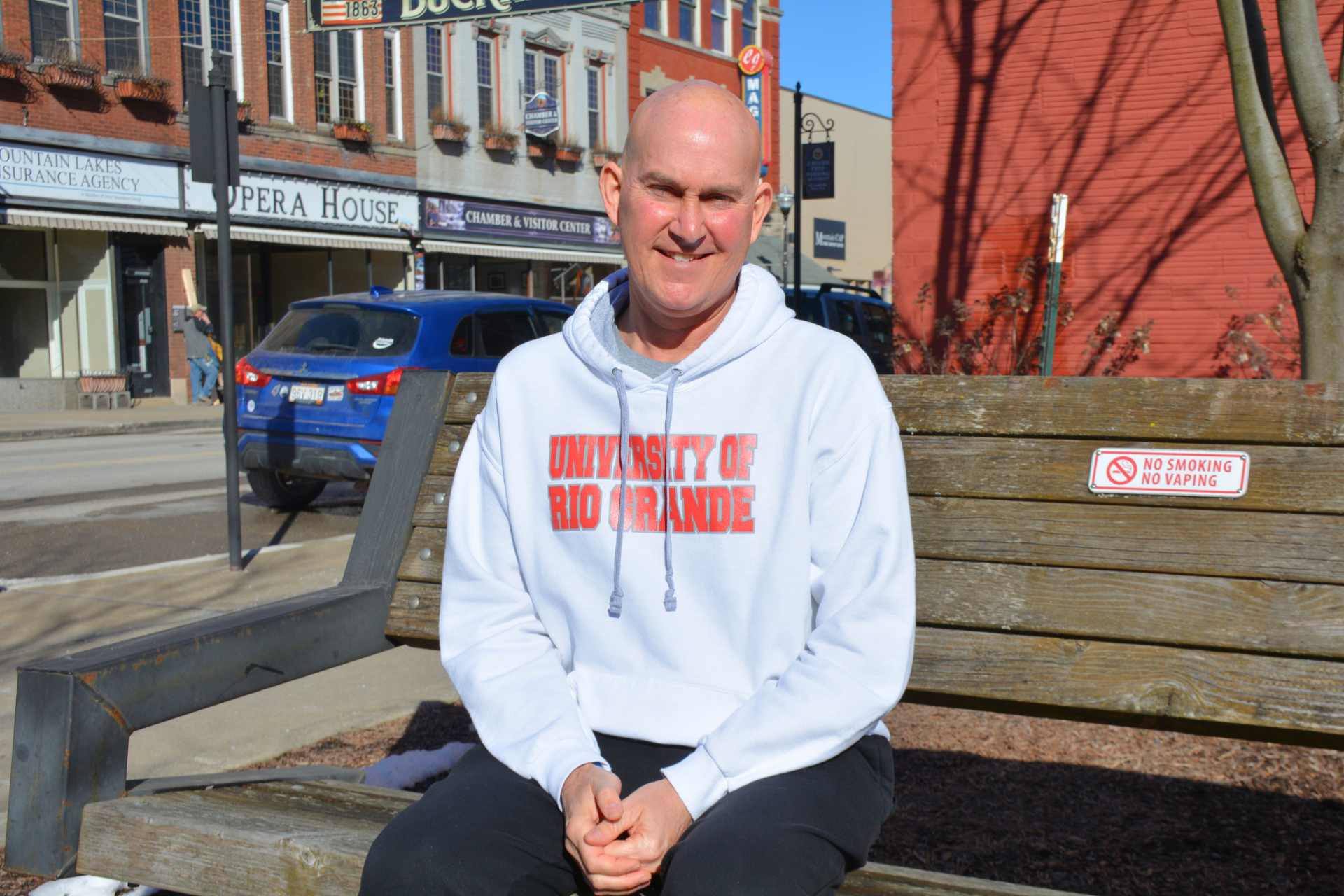CHARLESTON – “Safe and effective vaccines are coming to West Virginia soon, and we will be ready to get them to West Virginians,” Governor Jim Justice told West Virginians Friday. “Cost will not be a barrier.”
Justice announced that an initial shipment of about 16,000 to 20,000 Pfizer and BioNTech vaccines would reach the Mountain State over the next week during his Dec. 11 press conference with a Dec. 15 target date. Later that day, the Food and Drug Administration authorized Pfizer’s COVID-19 vaccine for emergency use, clearing the way for about 2.9 million initial doses to be shipped around the country over the next week.
On Friday, Justice unveiled the Mountain State’s two-phase allocation plan, noting Phase 1 will include four subsections, the first of which is staff and patients in ICU and other specialized care units of hospitals. Also included in Phase 1-A will be airway specialists, including ENTs and doctors who treat heart and lung problems, and nursing home and assisted living staff and patients.
Phase 1-B will make the Pfizer and BioNTech vaccine available to community infrastructure officials, public health officials and emergency responders, like police officers, firefighters, E911 Center telecommunicators and more.

Meanwhile Phase 1-C will cover all other healthcare workers, including remaining hospital staff, outpatient clinics, higher-risk healthcare settings, and home health and hospice workers. For instance, this third subsection will encompass dermatology offices, counseling and behavioral health clinics, optometrists, pediatrics, X-rays, etc.
Phase 1-D calls for vaccines to be made available to educators, faculty and staff in higher education and K-12 public schools as well as people who work in other sectors that provide critical services to the state, such as utility workers and transportation workers.
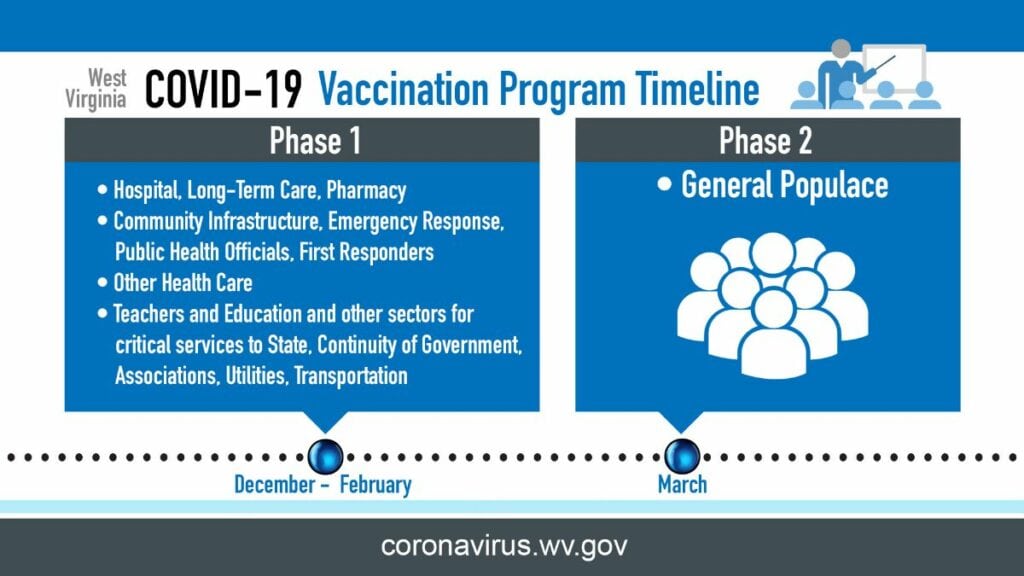
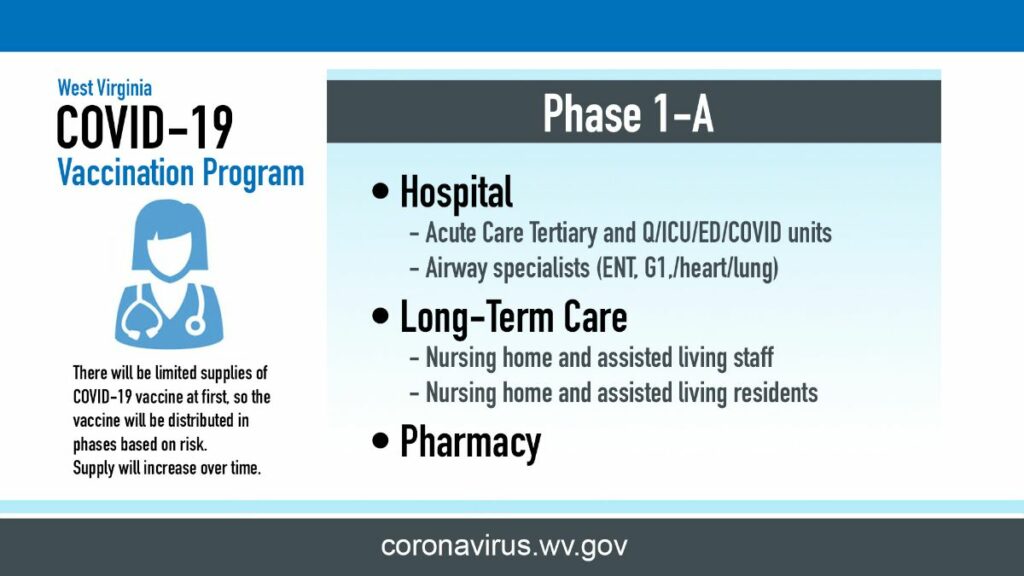
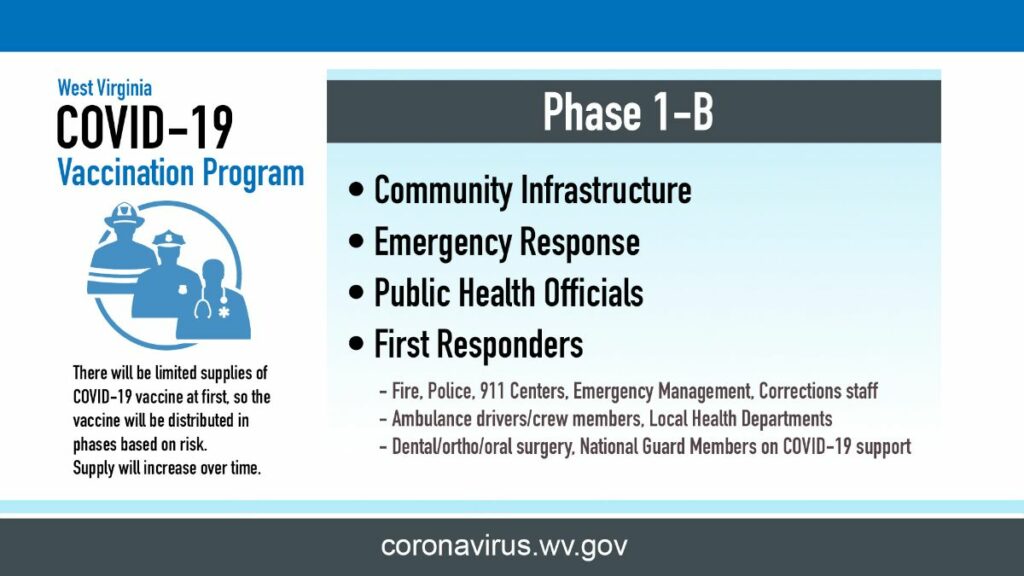
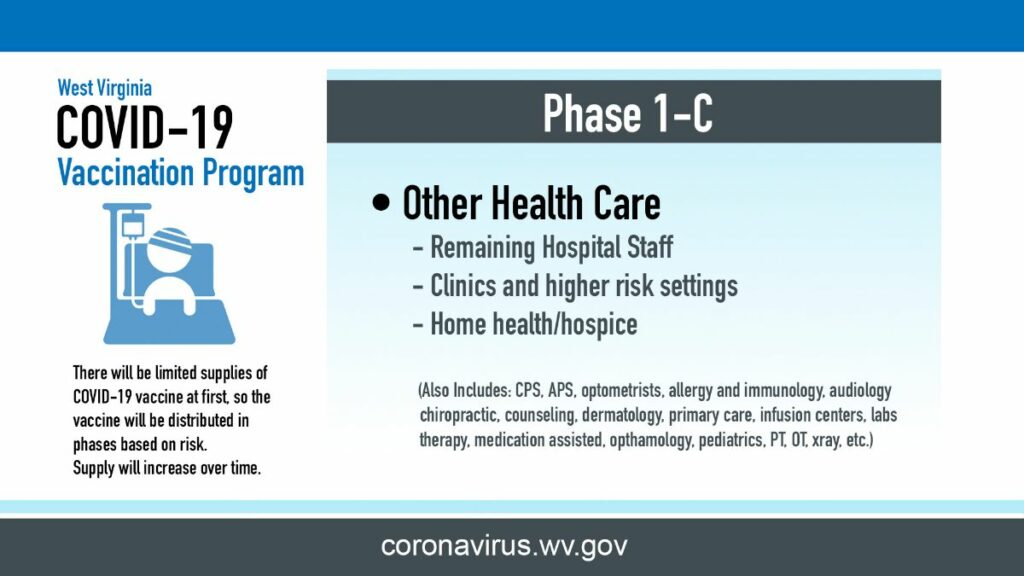
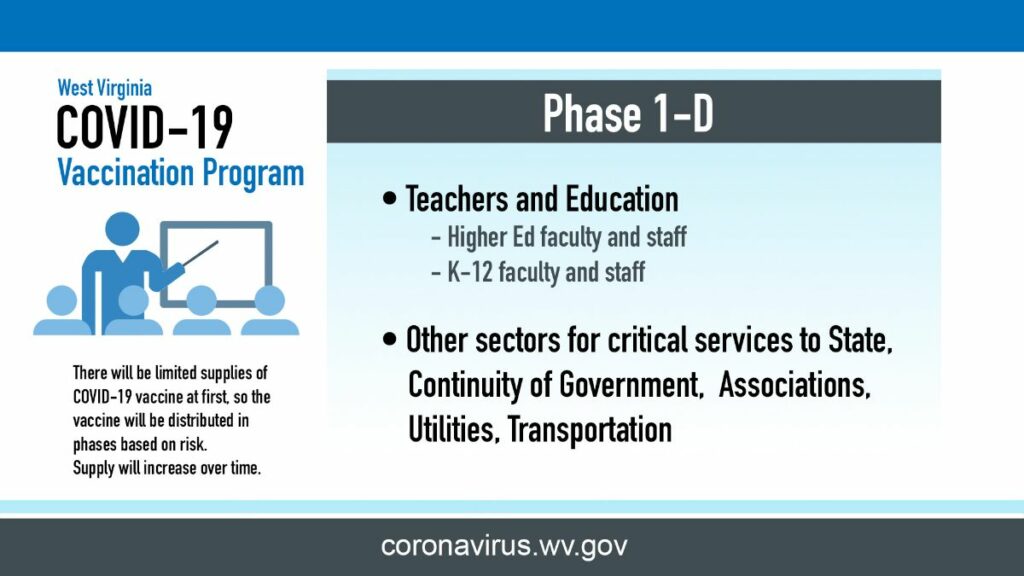
Justice said within 24 hours of West Virginia receiving the initial COVID-19 vaccines, the state will begin allocating them.
“This will be challenging, this will take a lot of work, but between the National Guard and all the players who are working with them, they will get this done,” Justice said. “As our allocation increases and distribution occurs, we will be able to move through the phases more quickly.”
Following the completion of Phase 1, which is expected to run from December through February, the State of West Virginia will begin distribution of COVID-19 vaccines to the general population in March 2020, Justice said, with a goal of vaccinating the most vulnerable people first.
“I am hoping that by March 10 or March 15, we will get to the general population,” the governor said. “That’s what we’re pushing for. People said I was crazy to push for that, but if you don’t push for anything, you don’t get anything done.”
Justice reiterated his warning that both the Pfizer/BioNTech and Moderna vaccines must be taken in two dosages 21 and 28 days apart, depending upon the vaccine, and it’s important for residents not to “cross-pollinate” them by taking one Pfizer vaccine dose, for instance, and then a second Modern vaccine dose, for example.
According to multiple news outlets, the FDA is scheduled to meet Tuesday, Dec. 15 to discuss emergency authorization for the Moderna COVID-19 vaccine, and if approved, West Virginia would receive about 32,000 doses, the governor has said.
During Friday’s press briefing, Dr. Clay Marsh, the state’s coronavirus ‘czar,’ explained in more depth how the new COVID-19 vaccines work. The new vaccines are categorized as mRNA or messenger RNA vaccines.
“The way it’s made is really a game-changing approach,” Marsh said. “It’s made by expressing a synthetic small amount of genetic code that basically just is that part of the virus – that spike protein – and the spike proteins are where the virus binds to cells in our body. So, all of the immune focus, whether it’s the antibodies that President Trump got from Regeron … or our natural immunity versus the virus … it’s all directed at those spike proteins, so we inhibit – we block the ability of the virus – to get into our bodies [with the administration of the vaccine].”
Marsh said the synthetic piece of genetic code is man-made and “instructs our bodies to respond only against that spike protein.”
“It’s really safe because it’s not the virus,” he added, “so there’s no way that anyone could get infected with [COVID-19] that.”
Marsh said the Pfizer and BioNTech vaccine has been proven 95 percent effective and dismissed a rumor that the vaccine could cause infertility among woman as “just false.”
